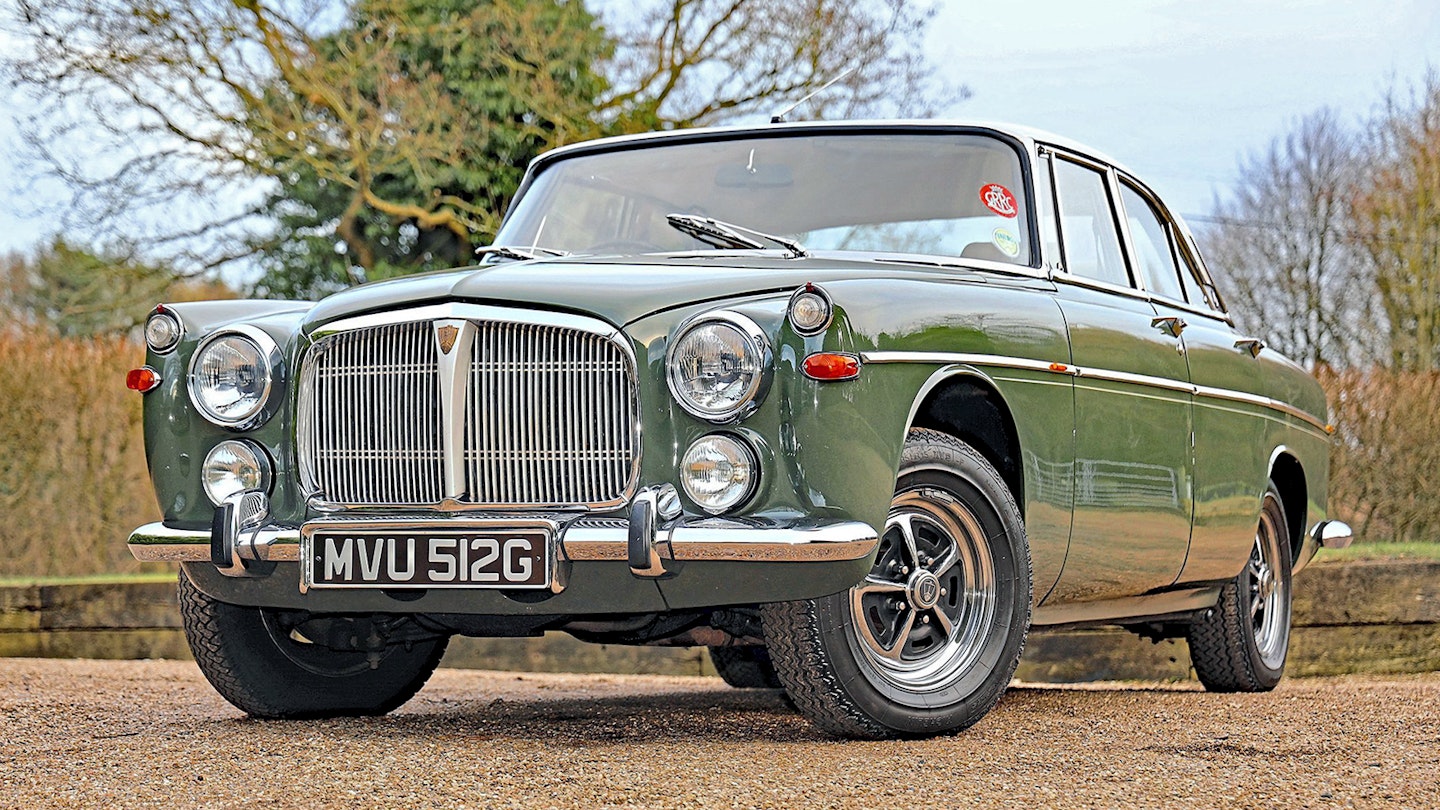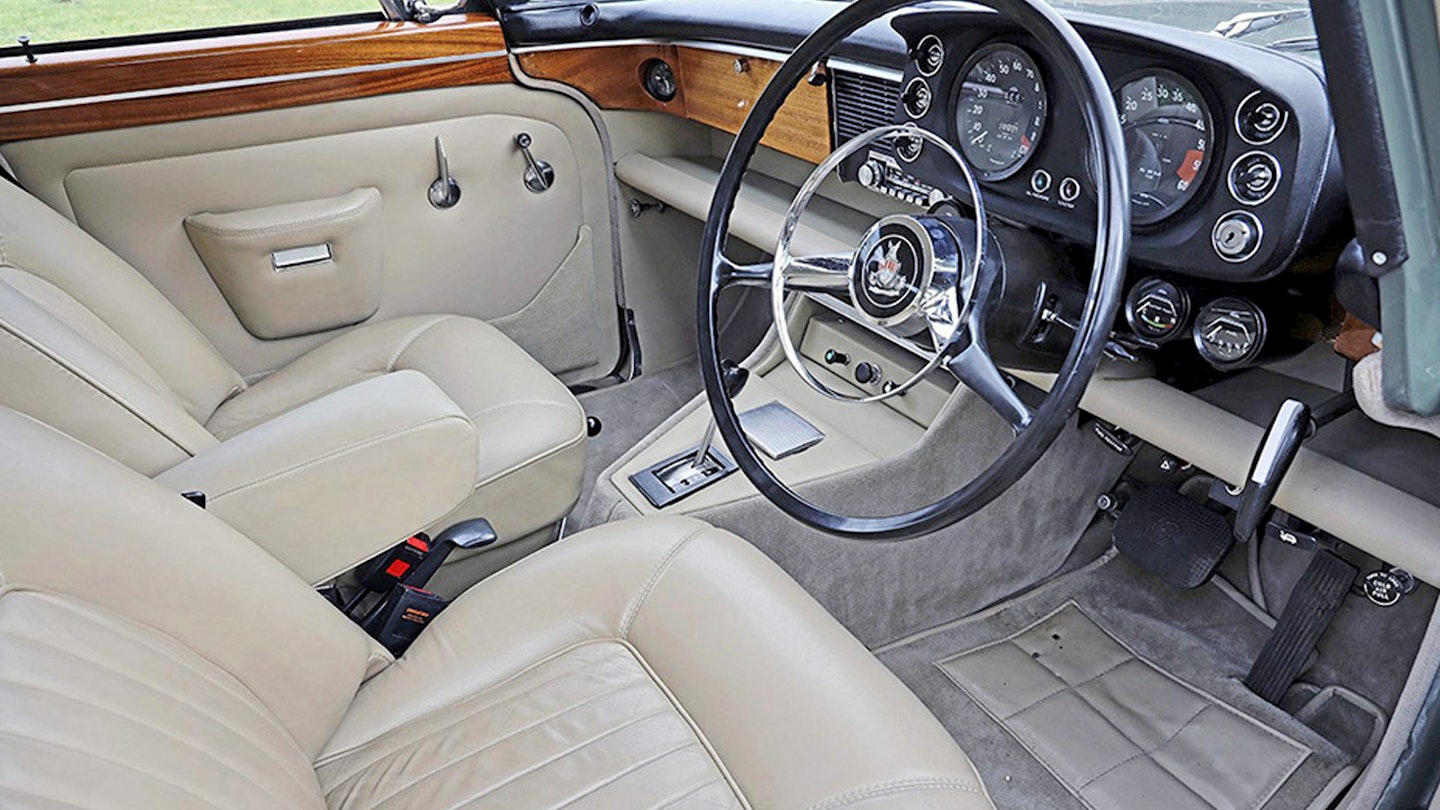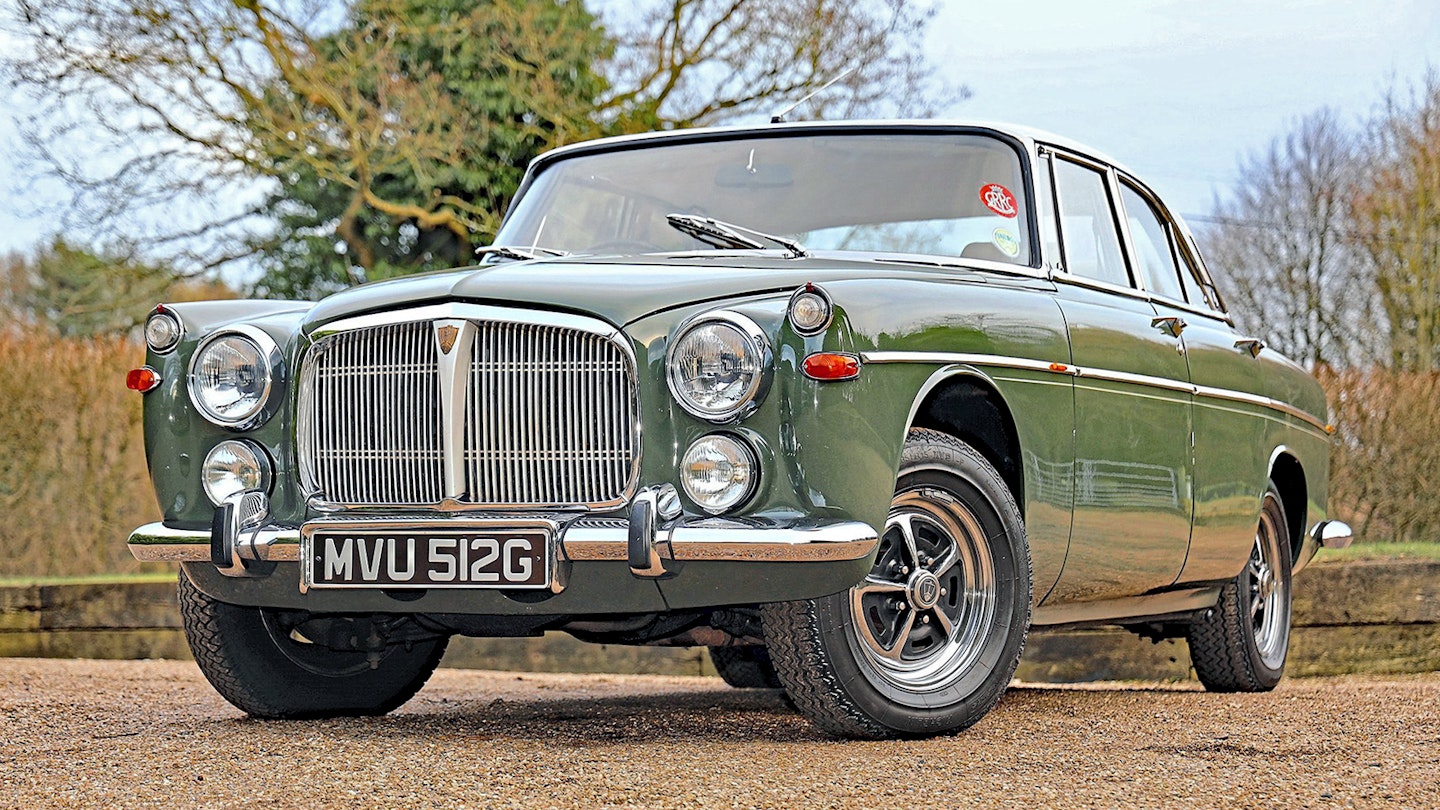Premium money at £41,950, but as seasoned road-tester Richard Gunn reveals, this P5B is the most premium of classic Rovers

This is substantial money for a Rover P5, although as a V8 Coupé it is the most sought-after variant. It’s also in excellent condition inside and out, and drives well.
Rover’s V8 is an engine of split personalities. In some machines – TVRs, Morgans, MGB GT V8s, etc – it feels sporty and swift. However in large luxury models, such as this P5B, it’s relaxed and refined, albeit easily capable of propelling around what is a substantial vehicle without any fuss. The gruff-sounding motor runs nicely and feels strong, exhibiting no hesitation or concerning noises. Such is the Rover’s insulation that it all sounds very muted inside. The Borg-Warner three-speed automatic transmission handles its changes just as it should, and the steering feels sharp. While the brakes have a lot of car to stop, they perform well, with plenty of bite and no diving to either side.
The bodywork scores highly. It was restored around 2010 at a cost of approximately £11,000, with further expensive photo-casebooked refreshment in 2012 and 2015 when, it is believed (according to the extensive notes from the previous owner), the colour was changed from original red and silver to the current green and silver. With only a few thousand miles covered since, the P5B is still excellent. There’s no corrosion and even minor body marks such as stone chips are almost completely absent. The brightwork is good, although up close, features such as the door handles and petrol cap show a little tarnishing. Tyres are Michelin XVS 185 HR15s, date-stamped 2017. A clever fitment is the subtle installation of a third brake light in the numberplate lamp plinth.

The Parchment leather interior looks like new and probably is; it’s obviously quite a recent retrim. There’s hardly any cracking to speak of, let alone more advanced wear, and this is as true of the driver’s seat as of the rest of the upholstery. The African cherry wood veneer is in good condition throughout, although some of the shades don’t quite match – such as on the driver’s door capping – suggesting partial replacement. The pull-out centre tray is unmarked.
All the gauges function as they should, including the passenger-side clock, and a period Radiomobile finishes off the interior perfectly. The front doors can need a firm press to close properly.

Before opening the bonnet, the more eagle-eyed may spot that it’s not a perfect fit, being more flush on the left-hand side than on the right. It’s the only panel gap that isn’t tight and even. Underneath the lid, it’s all nicely enough detailed without being scrupulously clean, and while to mostly to factory spec, there are a few areas where blue bullet electrical connectors make an appearance. Some of the additional wiring is for the Lumenition electronic ignition, which may be part of the reason the car starts so easily and runs well, even from cold. The fluids are at the levels they should be, and there are no obvious signs of leaks. Its 58,025 miles can’t be verified by the MoT certificates; they only go back to 1989.
SPECIFICATIONS
Engine 3528cc V8, ohv, carburettor Power 184bhp @ 5200rpm Torque 226lb ft @ 3000rpm Top speed 110mph 0-60mph 10.7sec Fuel Consumption 17-23mpg Length 4737mm Width 1778mm
